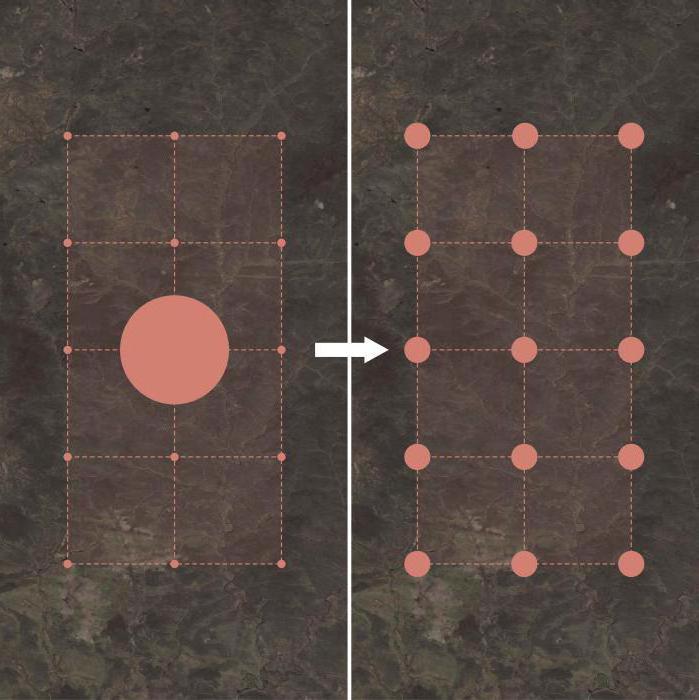Centers of financial responsibility (CFD) - an integral part of budget management, involving the division of responsibility within the enterprise.

Key Features
Key aspects:
- financial hierarchical structure, including the Central Federal District;
- budget structure that allows you to prepare reports and plans for different CFDs.
Budget management through the CFD has the following distinctive features:
- the transfer of tasks for individual indicators to different levels within the company, those who shape this factor are appointed responsible;
- the formation of plans and their implementation, working in a single coordinate system of the enterprise;
- focus on financial performance;
- analysis of the results, taking into account the factors noted in the plan;
- identification of compliance with goals and indicators obtained.
Terminology
The centers of financial responsibility of the enterprise are separate structural units within the organization. Their performance affects the economic efficiency of the company. The main task is responsibility for the correct preparation of financial plans and the achievement of the declared results.

In addition to the Central Federal District, an important role in the activities of the company is played by the central financial institution (financial accounting). These units affect the economic performance of the company and are designed to keep track of what has been achieved. A cost center (cost center) is a unit that provokes a cost level known in advance by what already exists. The CFD is responsible for the cost centers, and the CFU maintains current accounting.
Financial structure
A typical cost center is a technological facility. For its correct functioning it is necessary to regularly invest in raw materials, materials and other expense items. From a managerial point of view, the costs associated with the cost center are too small, so it is unacceptable to allocate an object as an independent CFD.
A financial hierarchical structure is a system that combines all the CFDs of a company. It determines what subordination is in the organization and at what level of nesting this or that center is located. This logic of work allows to achieve increased efficiency in the integrated management of financial indicators.
Classification: Indicators
The centers of enterprise financial responsibility can be classified in different ways - there are a lot of theories that offer original approaches. Each of them has positive aspects and weaknesses. Finding a universal solution is not easy. Experts recommend focusing primarily on economic indicators for which the CFDs under consideration are responsible. The division by this principle is equally suitable for all enterprises, regardless of their size, industry affiliation and scope.
The main economic indicators on the basis of which financial responsibility centers are identified in the budgeting system:
- profit in a given time period;
- costs for the same period;
- intermediate results (conditionally they can be designated as “marginal income”);
- investment indicators as a percentage of invested funds and profit received through them;
- profit indicators for all items of income, net of expenses incurred for the same period.

CFD classification
When taking into account the previously described indicators, the financial responsibility centers of the organization can be divided into categories as follows:
- Responsible for costs (procurement, production process, administrative department, commercial services).
- Income centers forming the direction of the enterprise.
- CMD (marginal income), responsible for a specific direction and the profit that it brings to the enterprise. The structure necessarily includes a central locking center reflecting direct production costs, and a central bank showing the profitability of the direction. CMD can be a separate structure or a combination of several points of the organizational business chain.
- CPU (profit) responsible for the positive balance after accounting for all costs. Typically, a CPU is an enterprise or a group of such and combines a data center, a data center, a data center (depending on the particular structure of a particular organization).
- QI (investment). These types of financial responsibility centers are engaged in investing; their functions include changing non-current assets. The main objective of QI is operational efficiency in terms of invested funds. This is calculated by ROI. The structure of the QI: several integrated CPUs, an enterprise, a holding, a group of companies. Often a CPU, a QI is the same object. This situation is typical when they consider an independent company that makes a profit and invests in some projects.

CH: features and activities
Studying the indicators of financial responsibility centers, first of all, attention is paid to costs directly related to the efficient use of resources and the activities of the company in general.
CH - these are units that are engaged in similar work. These can be divided into two groups:
- production;
- functional.
PTsZ capacious both in the context of material investments, and labor costs. This includes all production units. These elements do not directly participate in pricing, but they spend company resources and save up costs. PTZ managers are responsible for costs: they know the planned level and monitor its compliance. The main task of the boss is to minimize costs.
FCZs are responsible for general business needs, costs associated with economic operations, financial and legal operations.
The financial structure of the enterprise: centers of financial responsibility for example
The enterprise considered further is a certain notional company.
The construction of the CFD begins with an analysis of the organizational structure of the company. For this:
- allocate organizational links, form a list;
- build a hierarchy by subordination between the links (starting with the CEO, ending with lower positions - by individual performers);
- number the links, given nesting.
From the organizational structure and analysis of activities, you can draw the right conclusions about the direction of the company’s business. Next, a financial structure is formed. For this, a directory is compiled, where each link is indicated and it is noted that it is peculiar to it: CD, CH, CPU, CH. Some lines will have marks in several graphs of belonging to the centers, while others will have only one graph. The resulting matrix helps to classify the links in the organizational chain.
For example, for our contingent company this will give the following result:
- QI: firm.
- CPU: company.
- CP: sales.
- CH: marketing, administration, financiers, personnel officers.
Based on the information received, they make up a hierarchical list, nesting reflecting subordination between departments. Next, for each identified Central Federal District, a manager is chosen, and responsibility is laid on him for the work of the center. Structured information is stored in tabular form.

CFD and management accounting
The financial accounting center and the financial responsibility center in the company are tools that allow decentralizing the management of the organization, partially transferring responsibility from top managers to the middle and lower level personnel.It is worth remembering that the work done, the manufactured products and the services provided are not always able to be quantified by income.
Not every financial structure, whose responsibility centers are distributed correctly, is designed so that the responsible managers have the right to distribute the profit received by the Central Federal District, despite the fact that they are engaged in both the expenditure and the revenue components of the enterprise. The more complex the organizational, technological structure of the company, the more this question is more unsteady. At the same time, only by taking account of responsibility can one evaluate, measure, weigh plans and their implementation within each center.
Experts advise
According to established practice, management accounting is considered the most effective, since only it allows you to access relevant data, based on which you can make the right financial decision. The work applies relevant information generated by accounting if a specific financial management goal was put at the forefront. The formation of databases and the creation of reports is carried out by:
- Central heating facility;
- structural units.
Analyzed:
- financial decisions;
- technological introduction;
- specific products.
It is recommended to put this into practice using a convenient, simple information system. This is developed taking into account the decentralized power in the enterprise and the fact that managers are personally responsible for the financial performance of the company.

Decentralization and company structure
If the company is built on the idea of decentralized responsibility, if there is a center of financial responsibility, budgeting, a hierarchical structure that takes into account the particular type of activity, you can achieve quick and positive success. Why it happens? In the traditional approach, too much attention is paid to what mistakes were made by line managers. But with this option, the focus is only the result of the work process, not the technical points. Managers are not afraid to take the initiative, they often introduce innovative, innovative ideas in the company, which leads to a quick and high-quality solution to routine tasks. As a result, the optimization of the entire company as a whole.
Centers of financial responsibility are not required to coincide with the structure of the company (organizational, industrial). It is necessary to consolidate the auxiliary, main directions of the firm's work for some interconnected and managed from above CFD. It is also important to provide information infrastructure.

Algorithm V.E. Khrutsky
A well-known domestic economist and analyst proposed the method described below, which allows to identify the Central Federal District, on the basis of which to implement effective financial planning for responsibility centers.
- A list is being formed that includes all varieties of business enterprise within the organization. They also make a list, including the products they sell.
- Analysts identify organizational management structure. There are two types: linear functional and divisional.
- Varieties of activity are distributed among units within the company, highlighting those that are not sources of profit.
- Calculate costs, revenues, costs for each unit. Separately, the regulated and unregulated components of the enterprise’s expenses are distinguished.
- Allocate units that are responsible for financial flows and their adjustment.
Financial and organizational: what is the difference?
Centers of financial responsibility, forming the financial structure of the enterprise, were built taking into account the relationship of monetary and economic. Organizational is formed on the basis of the functionality of a department.Each of the cost centers is occupied with finances of one type, while the organizational structure involves a grouping of such functions, the performance of which is associated with the presence of specific skills and knowledge.
The financial structure shows a hierarchical system of responsibility in the company. For her, the key will be the concept of "result." For the organizational structure, the main concept is “subordination”. When creating such a structure, it is allowed to resort to compromise decisions and proceed from personal factors. The financial structure is built strictly on the realities of the market, without discounts on personal impressions and relationships.
Obviously, these two structures are fundamentally different. This is associated with certain management difficulties: as if driving a car with distorted controls. For maximum enterprise efficiency, it is necessary to adjust the organizational structure to the financial one.
What else to look for?
The obligatory concept is the budget of the financial responsibility center. This is carried out taking into account all the expenses and profits of the unit accompanying the operation. In this case, it is allowed to neglect:
- BBL (on the balance sheet).
- BDSDS (movement of money).
This is due to the fact that the Central Federal District does not control the types of activities that are reflected in these documents.

Responsibility inherent in the Central Federal District is rather limited. This is due to the fact that centers of financial responsibility are formed to achieve specific indicators. At the same time, financial accounting centers should be remembered, which, in turn, monitor compliance with standards and restrictions. DSCs are also ranked as CFDs.
Classification of CFD: features of a commercial enterprise
If the company is commercial, then for it the most correct method for classifying the CFD is considered to be based on the functionality and tasks of the centers. Allocate:
- auxiliary;
- the main ones.
The main ones work on the manufacture of products, the provision of services and the execution of work. The cost here is the cost of the product. Workshops and sales departments are classic representatives of the main CFDs.
The auxiliary ones include those that serve the main ones. It is customary to subdivide their costs according to the Central Federal District, summarize the obtained values and only then evaluate the real cost. The VTsFO is the AHO, technical control, repair, tool workshops.

Responsibility and Cost
At some enterprises, hierarchical systems have been introduced in which the centers of responsibility are identical to the central offices. Then they talk about coincident CFDs. Otherwise, they are called "not matching." Costs arise in specific structural units consuming resources. In relation to such units, they make plans, establish standards and keep records, designed to control costs and ensure cost accounting within the organization.
If the cost location corresponds to the Central Federal District, such a structure is considered optimal. In practice, the CFD is often responsible for several departments at the same time. At the same time, the head of the structural unit may refuse to take responsibility for the costs associated with the work of another department. In such controversial situations, the final decision will be with the company’s administration. Analysts decide how to classify costs and how thoroughly it is necessary to consider the process of their formation. Based on the decisions made, the costs are assigned to a specific CFD.